Abstract
Prenatal hemoglobinopathy screening was chosen as a model system for the study of patient receptivity to unsolicited genetic information. Providers of prenatal care in Rochester, NY, were offered free testing of all their prenatal patients and genetic counseling of women found positive. The 18,907 prenatal samples tested in a 5-year period represented 35.1% of the pregnancies in the Rochester metropolitan region. A hemoglobinopathy was found in 810 pregnancies (4.3%). Of the 21 different types of hemoglobinopathies detected, the most common were sickle cell trait (59%), hemoglobin C trait (19%), beta-thalassemia trait (11%), and hemoglobin E trait (5%). At the time of phlebotomy, 75% of the pregnancies were of less than 18 wk duration. Sixty-six percent of the pregnancies occurred in patients unaware of their diagnosis, and 80% occurred in patients unaware that they might be at risk for a child with a serious blood disorder. Of the 810 positive pregnancies, 551 (68%) occurred in patients who came for counseling. Of 453 women counseled during their first screened pregnancy, 390 (86%) said they wanted their partners tested and 254 (55%) had their partner tested. In the 77 pregnancies thus found to be at risk, the couple was too late for prenatal diagnosis in 12 cases, and the condition for which the fetus was at risk was too mild in 12 cases. Prenatal diagnosis was offered in the remaining 53 pregnancies and was accepted by 25 couples (47%). These results indicate that unselected patients in the primary care setting in this region, even though pregnant, are receptive to and utilize genetic information.
Full text
PDF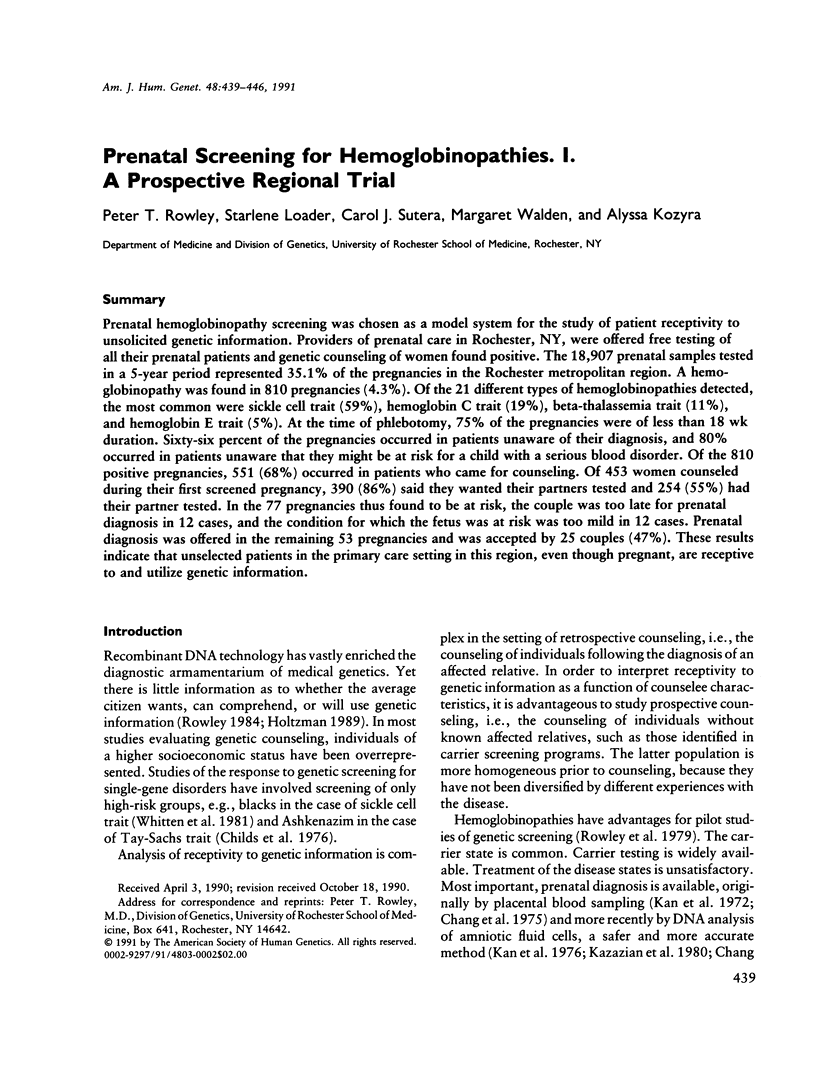
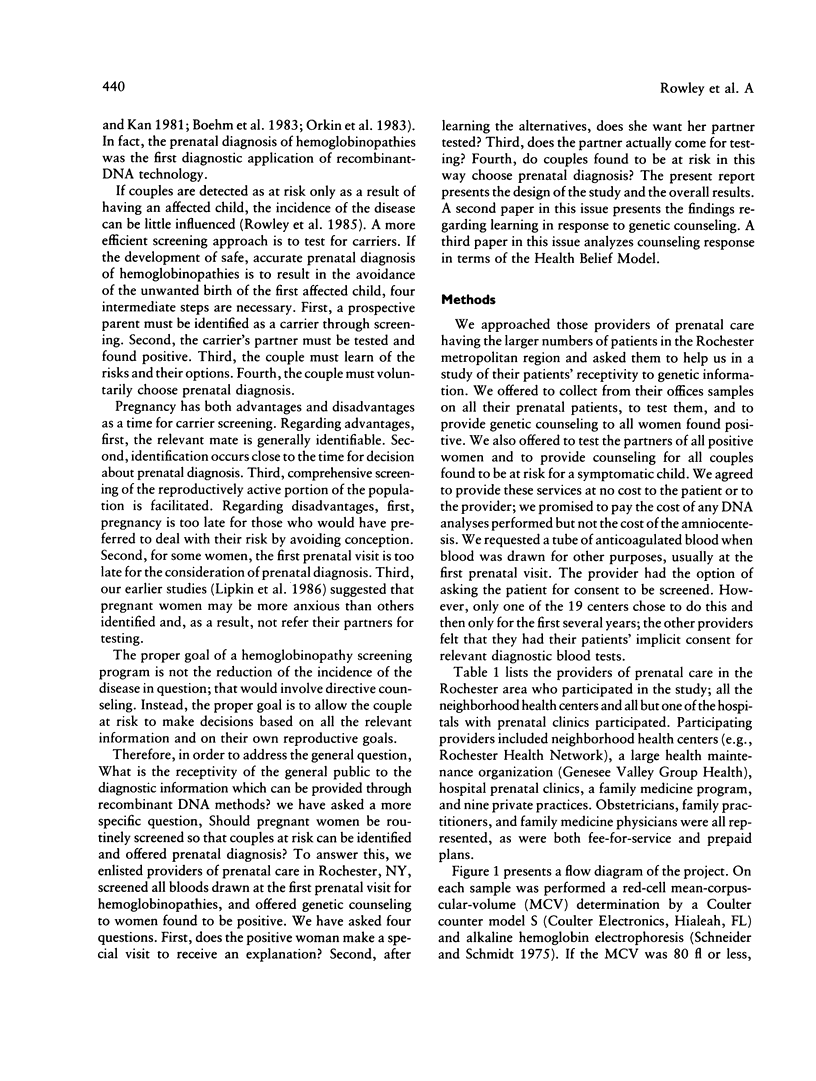
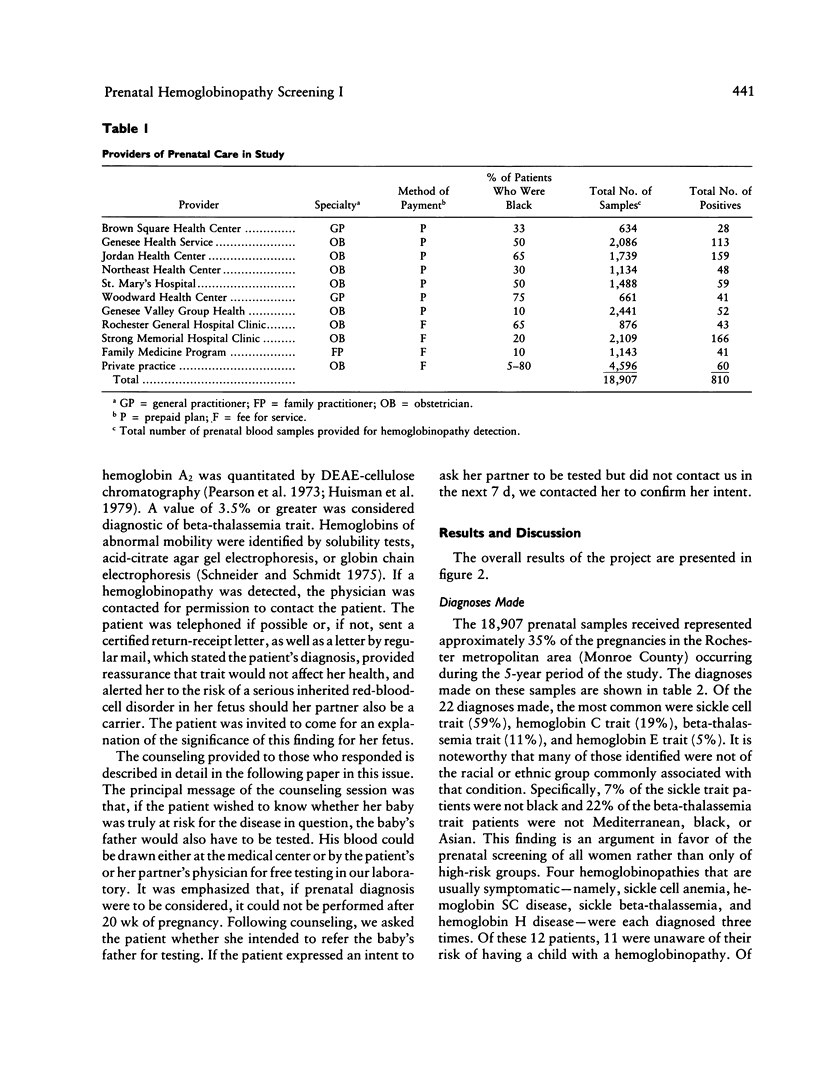
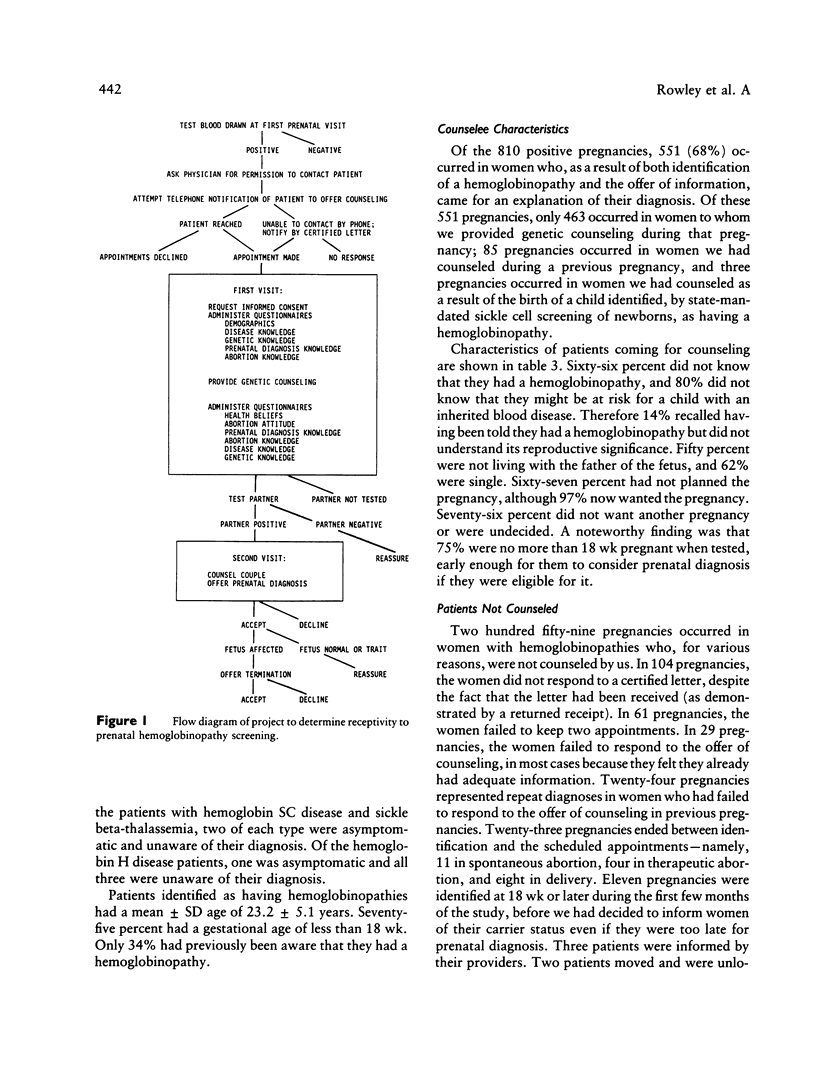
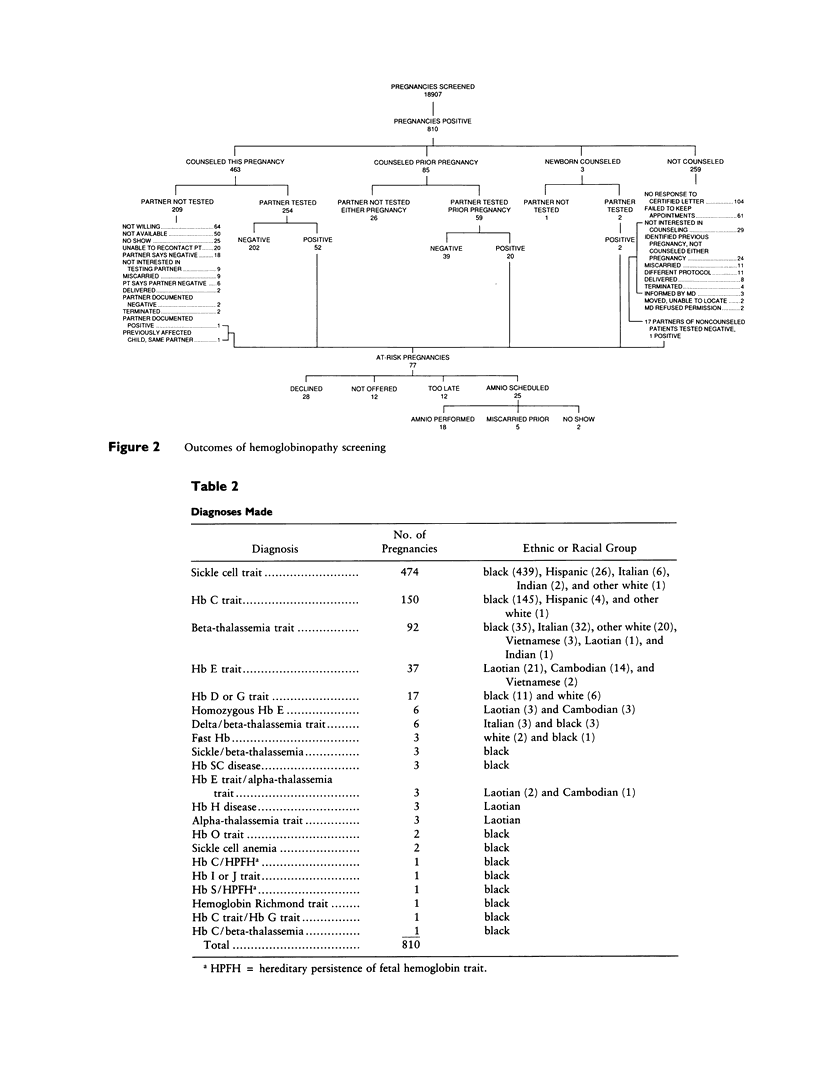
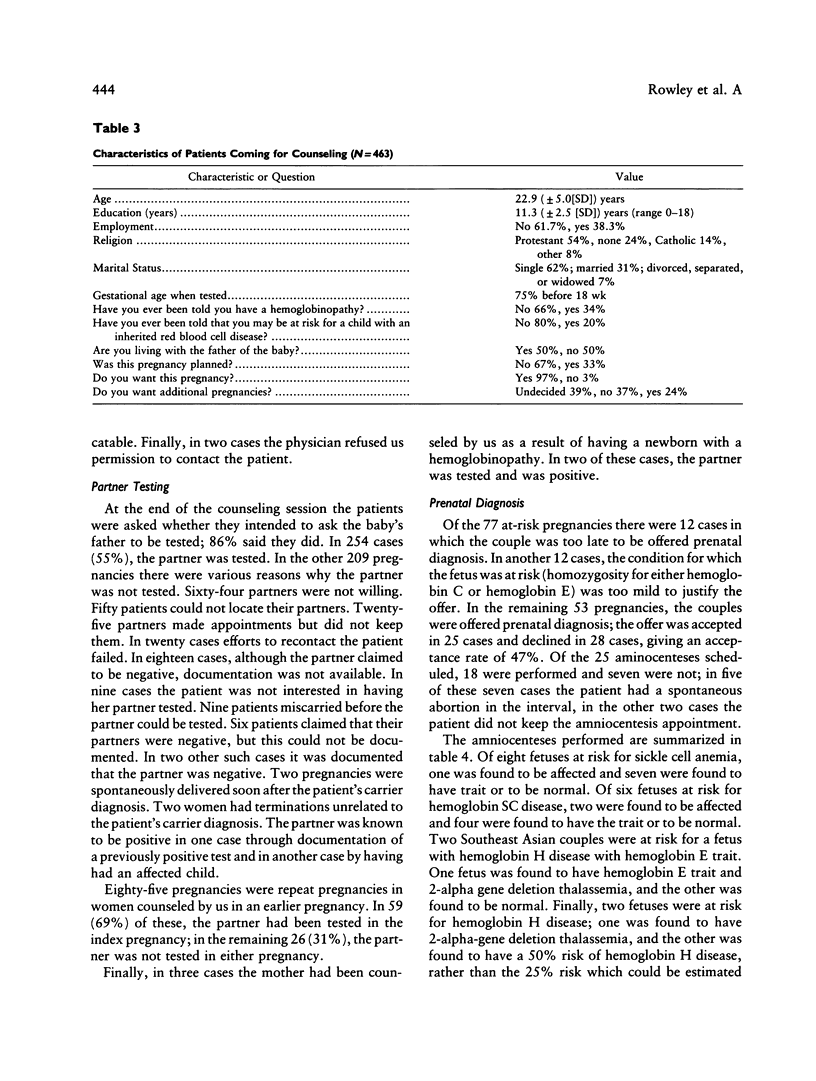
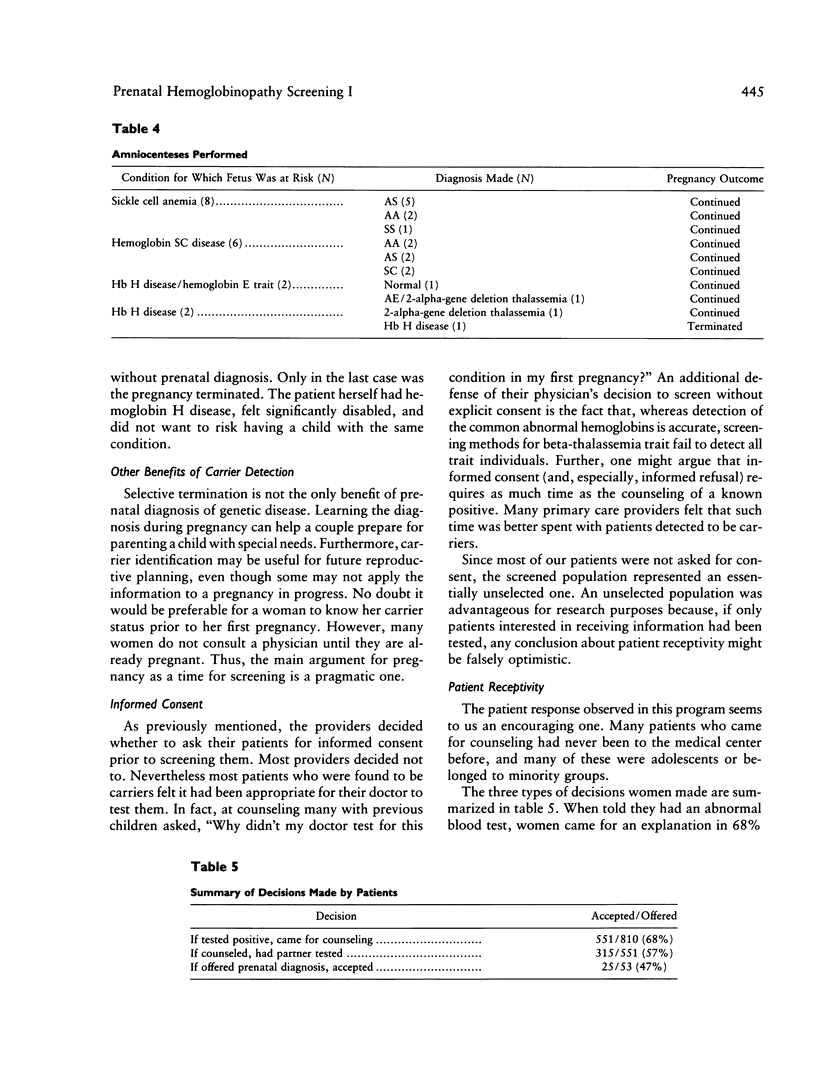
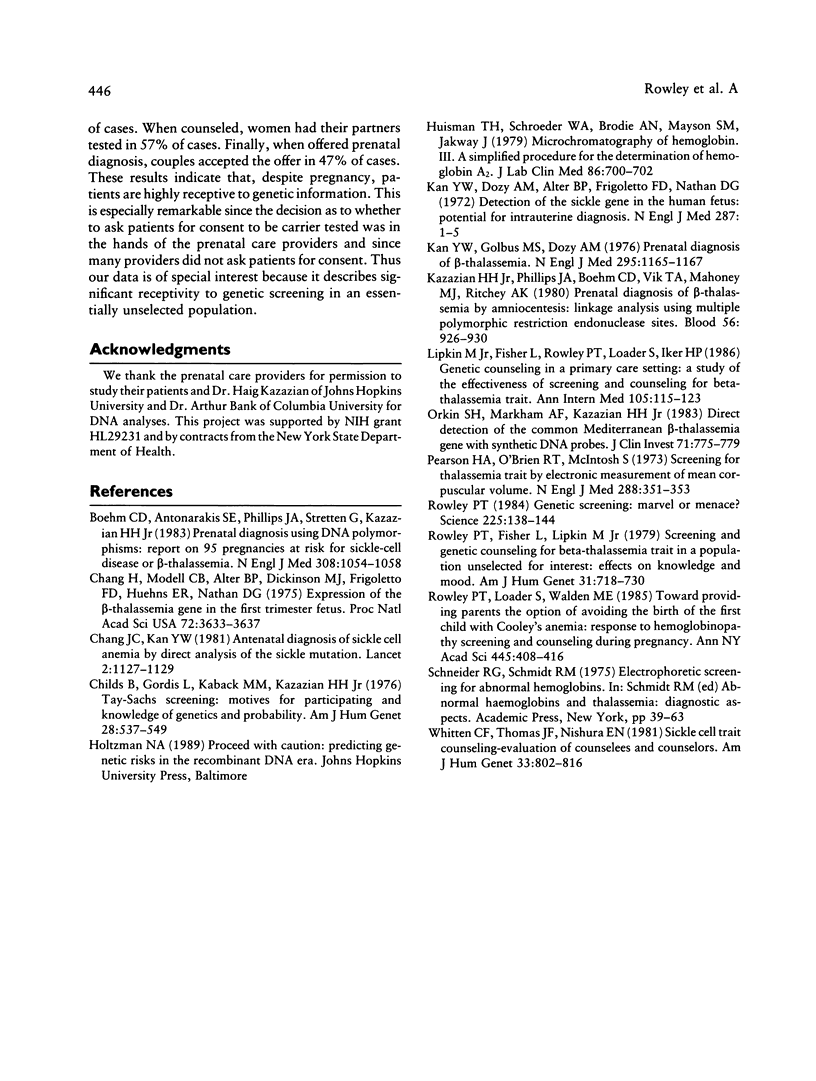
Selected References
These references are in PubMed. This may not be the complete list of references from this article.
- Boehm C. D., Antonarakis S. E., Phillips J. A., 3rd, Stetten G., Kazazian H. H., Jr Prenatal diagnosis using DNA polymorphisms. Report on 95 pregnancies at risk for sickle-cell disease or beta-thalassemia. N Engl J Med. 1983 May 5;308(18):1054–1058. doi: 10.1056/NEJM198305053081803. [DOI] [PubMed] [Google Scholar]
- Chang H., Modell C. B., Alter B. P., Dickinson M. J., Frigoletto F. D., Huehns E. R., Nathan D. G. Expression of the beta-thalassemia gene in the first trimester fetus. Proc Natl Acad Sci U S A. 1975 Sep;72(9):3633–3637. doi: 10.1073/pnas.72.9.3633. [DOI] [PMC free article] [PubMed] [Google Scholar]
- Chang J. C., Kan Y. W. Antenatal diagnosis of sickle cell anaemia by direct analysis of the sickle mutation. Lancet. 1981 Nov 21;2(8256):1127–1129. doi: 10.1016/s0140-6736(81)90584-5. [DOI] [PubMed] [Google Scholar]
- Childs B., Gordis L., Kaback M. M., Kazazian H. H., Jr Tay-Sachs screening: motives for participating and knowledge of genetics and probability. Am J Hum Genet. 1976 Nov;28(6):537–549. [PMC free article] [PubMed] [Google Scholar]
- Huisman T. H., Schroeder W. A., Brodie A. N., Mayson S. M., Jakway J. Microchromatography of hemoglobins. II. A simplified procedure for the determination of hemoglobin A2. J Lab Clin Med. 1975 Oct;86(4):700–702. [PubMed] [Google Scholar]
- Kan Y. W., Dozy A. M., Alter B. P., Frigoletto F. D., Nathan D. G. Detection of the sickle gene in the human fetus. Potential for intrauterine diagnosis of sickle-cell anemia. N Engl J Med. 1972 Jul 6;287(1):1–5. doi: 10.1056/NEJM197207062870101. [DOI] [PubMed] [Google Scholar]
- Kan Y. W., Golbus M. S., Dozy A. M. Prenatal diagnosis of alpha-thalassemia. Clinical application of molecular hybridization. N Engl J Med. 1976 Nov 18;295(21):1165–1167. doi: 10.1056/NEJM197611182952104. [DOI] [PubMed] [Google Scholar]
- Kazazian H. H., Jr, Phillips J. A., 3rd, Boehm C. D., Vik T. A., Mahoney M. J., Ritchey A. K. Prenatal diagnosis of beta-thalassemias by amniocentesis: linkage analysis using multiple polymorphic restriction endonuclease sites. Blood. 1980 Nov;56(5):926–930. [PubMed] [Google Scholar]
- Lipkin M., Jr, Fisher L., Rowley P. T., Loader S., Iker H. P. Genetic counseling of asymptomatic carriers in a primary care setting. The effectiveness of screening and counseling for beta-thalassemia trait. Ann Intern Med. 1986 Jul;105(1):115–123. doi: 10.7326/0003-4819-105-1-115. [DOI] [PubMed] [Google Scholar]
- Orkin S. H., Markham A. F., Kazazian H. H., Jr Direct detection of the common Mediterranean beta-thalassemia gene with synthetic DNA probes. An alternative approach for prenatal diagnosis. J Clin Invest. 1983 Mar;71(3):775–779. doi: 10.1172/JCI110826. [DOI] [PMC free article] [PubMed] [Google Scholar]
- Pearson H. A., O'Brien R. T., McIntosh S. Screening for thalassemia trait by electronic measurement of mean corpuscular volume. N Engl J Med. 1973 Feb 15;288(7):351–353. doi: 10.1056/NEJM197302152880706. [DOI] [PubMed] [Google Scholar]
- Rowley P. T., Fisher L., Lipkin M., Jr Screening and genetic counseling for beta-thalassemia trait in a population unselected for interest: effects on knowledge and mood. Am J Hum Genet. 1979 Nov;31(6):718–730. [PMC free article] [PubMed] [Google Scholar]
- Rowley P. T. Genetic screening: marvel or menace? Science. 1984 Jul 13;225(4658):138–144. doi: 10.1126/science.6729472. [DOI] [PubMed] [Google Scholar]
- Rowley P. T., Loader S., Walden M. E. Toward providing parents the option of avoiding the birth of the first child with Cooley's anemia: response to hemoglobinopathy screening and counseling during pregnancy. Ann N Y Acad Sci. 1985;445:408–416. doi: 10.1111/j.1749-6632.1985.tb17210.x. [DOI] [PubMed] [Google Scholar]
- Whitten C. F., Thomas J. F., Nishiura E. N. Sickle cell trait counseling-evaluation of counselors and counselees. Am J Hum Genet. 1981 Sep;33(5):802–816. [PMC free article] [PubMed] [Google Scholar]


